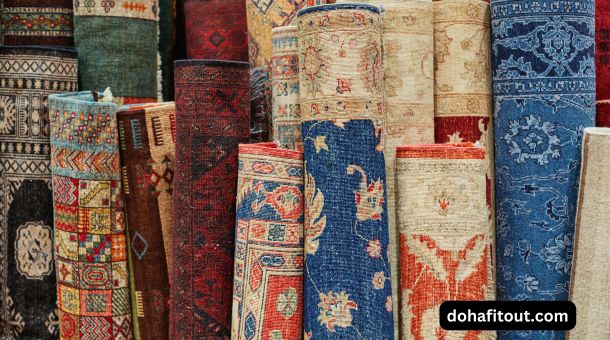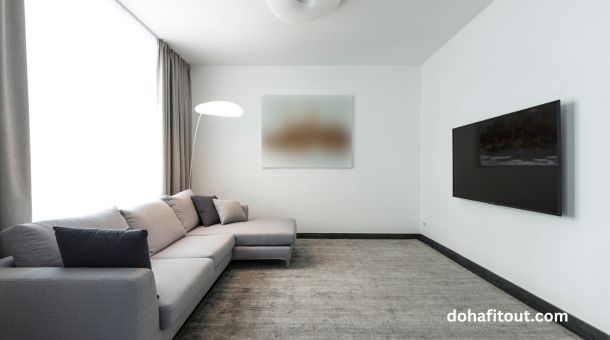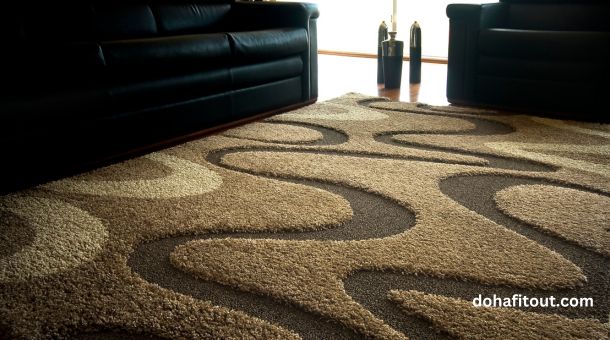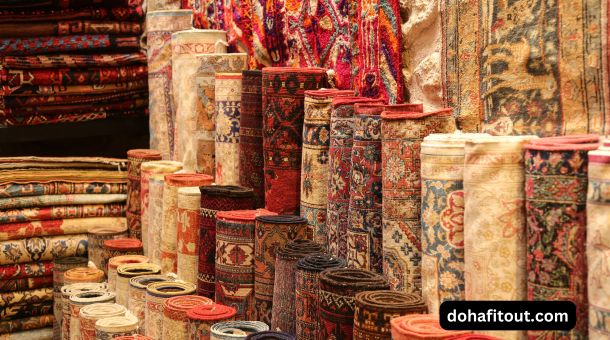Carpet Center’s have been a staple in homes, offices, and commercial spaces for centuries, offering a soft surface underfoot and a way to enhance a room’s aesthetic appeal and comfort. Choosing the right carpet can transform your space entirely if you want to add warmth, style, or functionality. “Carpet Center” is not just a physical store or a brand but also a symbolic hub where people gather information, inspiration, and quality products for their flooring needs.
At Carpet Center, we understand that choosing the perfect carpet can be overwhelming, given the variety of styles, materials, and patterns available. This guide will walk you through everything you need about carpets, from understanding different types to selecting the right one for your needs.
This article will provide everything you need about Carpet Center helping you make informed decisions that suit your personal preferences and practical needs.

For More Information Visit Now: Carpet Center
Why Choose Carpet?
Carpet Center is more than just a flooring option; it’s a design element that can bring together the aesthetic of an entire room. It offers several benefits that other flooring types, such as hardwood or tiles, may not. These include:
- Comfort: Carpet Center provide a cushioned surface that feels soft and luxurious underfoot. It is a fantastic option for areas where people walk barefoot or for homes with children and elderly individuals.
- Warmth and Insulation: Carpet Center are an additional insulation layer, keeping rooms warmer in winter. They also provide acoustic insulation, reducing noise in busy areas.
- Safety: Carpet Center flooring can minimize the chance of slips and falls, making it a safer alternative in households with kids or elderly family members.
- Aesthetic Appeal: With various colors, patterns, and textures, carpets can complement any interior design, from modern minimalism to traditional elegance.
Types of Carpet: Understanding the Basics
Numerous types of carpets are available, each with advantages and ideal settings. Knowing the different sorts can help you decide better based on your unique needs.
- Cut Pile: This is the most popular type of carpet. Cut-pile carpets are made by slicing the loops of yarn, creating an upright pile. They’re available in multiple styles, such as plush, Saxony, and frieze, each providing varying levels of softness and durability.
- Plush Carpets: These offer a velvety, even highly comfortable texture. Plush carpets are perfect for formal spaces like living rooms or master bedrooms.
- Frieze Carpets: Known for their durability, they are ideal for high-traffic areas. Their twisted, curly pile resists wear and hides dirt.
- Loop Pile: Unlike cut pile carpets, loop pile carpets have uncut loops of yarn. This type of carpet is known for its durability and resistance to stains and crushing.
- Berber: One of the most common loop pile carpets, Berber is highly durable and works well in areas like basements or hallways. Its distinct, knobby texture can give your room a casual, comfortable look.
- Cut and Loop: Combining both cut and loop piles, these carpets offer patterns and textures that give a multidimensional look. They are often used in rooms where you want to add style and practicality.
- Textured Carpet: Textured carpets resist dirt and footprints and give a casual, rugged appearance, making them ideal for family rooms or busy areas.

Material Matters: Fiber Types Explained
Carpet fiber is just as important as the type of pile. The fiber used affects everything from the carpet’s durability to its softness, stain resistance, and price.
- Nylon: The most popular carpet fiber due to its resilience and affordability, nylon is highly durable, making it ideal for high-traffic areas. It resists wear and tear, though it may require a stain treatment.
- Polyester: Polyester offers a softer feel and is a more affordable option. It is often chosen for its vibrant color options and stain resistance, though it may not last as long as nylon in heavy-traffic areas.
- Wool: Wool is an herbal fiber that provides luxury, softness, and warmth. Wool carpets are durable, flame-resistant, and eco-friendly. However, they come at a higher price point and are less stain-resistant than synthetic fibers.
- Olefin (Polypropylene): Known for its stain and moisture resistance, olefin is best suited for outdoor areas or basements. It’s less soft and not as durable as nylon or wool but is cost-effective for specific applications.
- Acrylic: Sometimes called “synthetic wool,” acrylic mimics the feel of wool but is less durable. It is used in specific applications where a natural wool-like appearance is needed at a lower cost.
Choosing the Right Carpet for Each Room
Different areas of your home or office will have unique needs when it comes to carpets. Here are some guidelines for selecting carpets based on specific rooms:
- Living Room: The living room is often high-traffic, so you’ll want to choose a durable yet stylish option. Saxony or plush carpets can offer a luxurious feel for formal living rooms, while textured or frieze carpets work well in family spaces.
- Bedroom: Softness is essential for bedrooms. Choose a plush or Saxony carpet in a calming color that promotes relaxation.
- Hallways and Stairs: Since these areas see a lot of foot traffic, durability is essential. A Berber or frieze carpet with a loop pile will handle wear and tear while still looking good.
- Office: If you’re carpeting an office, consider a low-pile option like a Berber or loop carpet that resists furniture impressions and maintains its appearance over time.
- Basement: Consider moisture-resistant options like olefin for basements. Low-pile carpets are often better, as they resist wear and are easier to clean in these environments.

Carpet Padding: The Unsung Hero
Many people overlook carpet padding, which is crucial for comfort and longevity. The padding is a cushion between the carpet and the floor, absorbing foot traffic impact and providing insulation. Choosing the right padding thickness and material can prolong the life of your carpet and improve comfort.
- Foam Padding is often the least expensive option, offering moderate support and comfort.
- Rebond Padding: Made from recycled foam, rebond padding is durable and widely used for residential carpeting.
- Rubber Padding: Rubber padding provides a firm, long-lasting base, making it ideal for commercial or high-traffic spaces.
- Fiber Padding: Fiber padding is made from natural materials like jute or felt. It offers a firmer feel and is often used with wool carpets.
Installation: The Final Step
Carpet installation can make or break the success of your flooring investment. It’s advisable to hire professionals to ensure the carpet is adequately stretched, secured, and cut to fit. Poor installation can lead to wrinkles, bunching, or uneven surfaces, diminishing the carpet’s aesthetic and practical value.
Carpet Maintenance: Keeping It Looking New
Carpet Centers require regular maintenance to keep their appearance and extend their life. Here are some tips to keep your carpet looking its best:
- Vacuum Regularly: Regular vacuuming helps remove dirt and dirt before settling deep into the fibers, which could be put on through the years.
- Spot Cleaning: Deal with spills and stains immediately to save permanent damage. Always use a carpet-safe cleaner and blot rather than scrub the area to avoid damaging the fibers.
- Professional Cleaning: Having your carpet professionally cleaned at least once a year helps remove deep-seated dirt and refresh the fibers.
- Rotate Furniture: Periodically moving furniture prevents the carpet from wearing unevenly in certain areas.
Carpet Trends: What’s Hot in 2024?
Carpet Center trends evolve just like any other aspect of interior design. In 2024, we’re seeing a rise in eco-friendly materials, bold patterns, and soft, textured carpets. Here are a few trends to watch:
- Eco-Friendly Carpets: With the focus on sustainability, carpets made from natural or recycled fibers, such as wool or polyester blends, are increasingly popular.
- Bold Patterns and Textures: Geometric patterns, abstract designs, and varying textures like cut-and-loop or high-low pile patterns add visual interest and depth to modern interiors.
- Neutral Tones: Soft, earthy tones like beige, gray, and taupe continue to be favorites, offering a versatile backdrop that complements various design styles.
- Layering Rugs Over Carpet: Combining area rugs with wall-to-wall carpets is an emerging trend. It adds another layer of texture and allows for more design flexibility in open spaces.

FAQs for Carpet Center
What forms of carpets do you provide at Carpet Center?
Carpet Center offers various carpets, including cut pile, loop pile, cut-and-loop, and textured rugs. You can also choose from fiber materials like nylon, polyester, wool, olefin, and acrylic, each tailored to specific needs and spaces.
How do I choose the right carpet for my home?
Selecting the right carpet depends on several factors, such as the room’s traffic level, desired look, and budget. Durable options like Berber or frieze carpets are ideal for high-traffic areas. Softer options like plush or Saxony are perfect for low-traffic areas like bedrooms. Feel free to consult with our experts for personalized recommendations.
What is the distinction between cut pile and loop pile carpets?
Cut pile Carpet Center have cut yarns, resulting in a softer, upright surface. Loop pile carpets have loops of yarn left uncut, making them more durable and wear-resistant, ideal for high-traffic areas.
What are the benefits of wool carpets?
Wool Carpet Center are natural, durable, flame-resistant, and eco-friendly. They provide warmth and luxury, making them ideal for bedrooms and living rooms. However, they are usually more expensive and less stain-resistant than synthetic fibers like nylon or polyester.
Do you offer carpets that are pet-friendly?
Yes, we offer a variety of pet-friendly Carpet Center, including stain-resistant options like nylon and polyester. Loop pile carpets are also a good choice as they are durable and resist wear from pet claws.
What is the cost of carpet installation?
Carpet installation prices vary depending on factors like the type of carpet, room size, and complexity of the installation. We provide a detailed quote during your consultation, including material and labor costs.

Conclusion
Carpets are more than just flooring; they are integral to any interior design. Choosing the right rug from the variety of fibers and pile types to the color, texture, and patterns can dramatically change a room’s ambiance.
Whether you’re looking for something durable for high-traffic areas or a plush, luxurious carpet for a cozy bedroom, “Carpet Center” is where you can find the perfect option. With the proper care and protection, your carpet will provide comfort, style, and functionality for many years.
